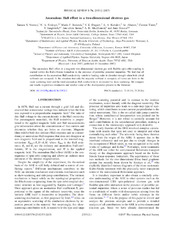| dc.creator | Nunner, Tamara S. | |
| dc.creator | Sinitsyn, N. A. | |
| dc.creator | Borunda, Mario F. | |
| dc.creator | Dugaev, V. K. | |
| dc.creator | Kovalev, A. A. | |
| dc.creator | Abanov, Artem | |
| dc.creator | Timm, Carsten | |
| dc.creator | Jungwirth, T. | |
| dc.creator | Inoue, Jun-ichiro | |
| dc.creator | MacDonald, A. H. | |
| dc.creator | Sinova, Jairo. | |
| dc.date.accessioned | 2011-10-10T21:09:10Z | |
| dc.date.available | 2011-10-10T21:09:10Z | |
| dc.date.issued | 2007 | |
| dc.identifier.citation | Tamara S. Nunner, N. A. Sinitsyn, Mario F. Borunda, V. K. Dugaev, A. A. Kovalev, Artem Abanov, Carsten Timm, T. Jungwirth, Jun-ichiro Inoue, A. H. MacDonald and Jairo Sinova. Phys.Rev.B 76 235312 2007."Copyright (2007) by the American Physical Society." | en |
| dc.identifier.uri | http://dx.doi.org/10.1103/PhysRevB.76.235312 | |
| dc.identifier.uri | https://hdl.handle.net/1969.1/127344 | |
| dc.description | Journals published by the American Physical Society can be found at http://journals.aps.org/ | en |
| dc.description.abstract | The anomalous Hall effect in a magnetic two-dimensional electron gas with Rashba spin-orbit coupling is studied within the Kubo-Streda formalism in the presence of pointlike potential impurities. We find that all contributions to the anomalous Hall conductivity vanish to leading order in disorder strength when both chiral subbands are occupied. In the situation that only the majority subband is occupied, all terms are finite in the weak scattering limit and the total anomalous Hall conductivity is dominated by skew scattering. We compare our results to previous treatments and resolve some of the discrepancies present in the literature. | en |
| dc.language.iso | en | |
| dc.publisher | American Physical Society | |
| dc.subject | SEMICONDUCTORS | en |
| dc.subject | Physics | en |
| dc.title | Anomalous Hall effect in a two-dimensional electron gas | en |
| dc.type | Article | en |
| dc.audience | | |
| local.department | Physics and Astronomy | en |


